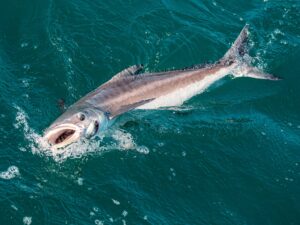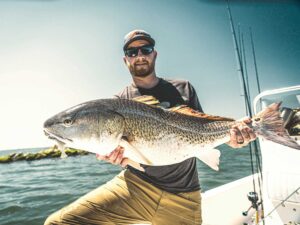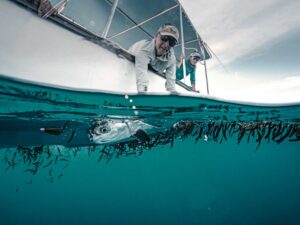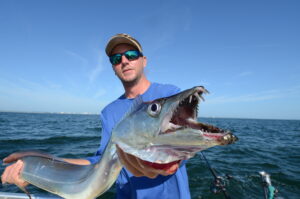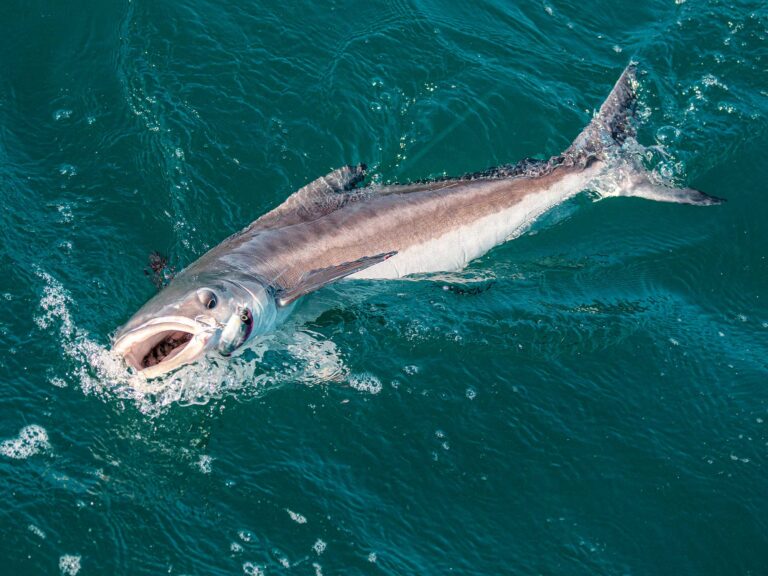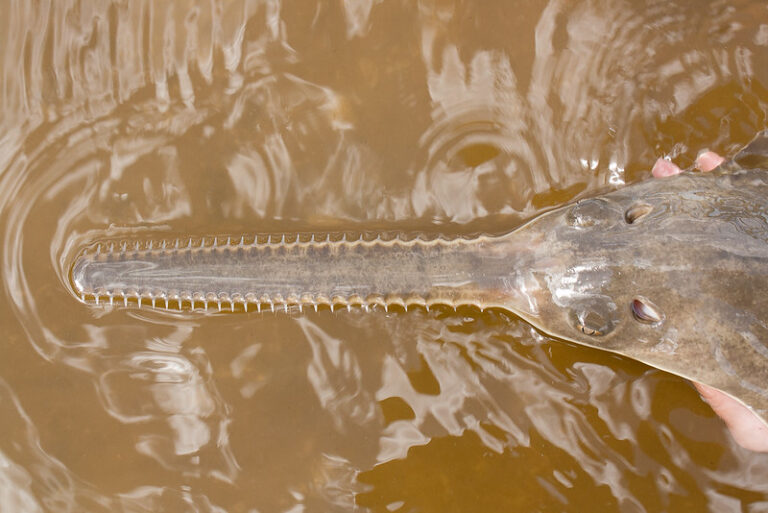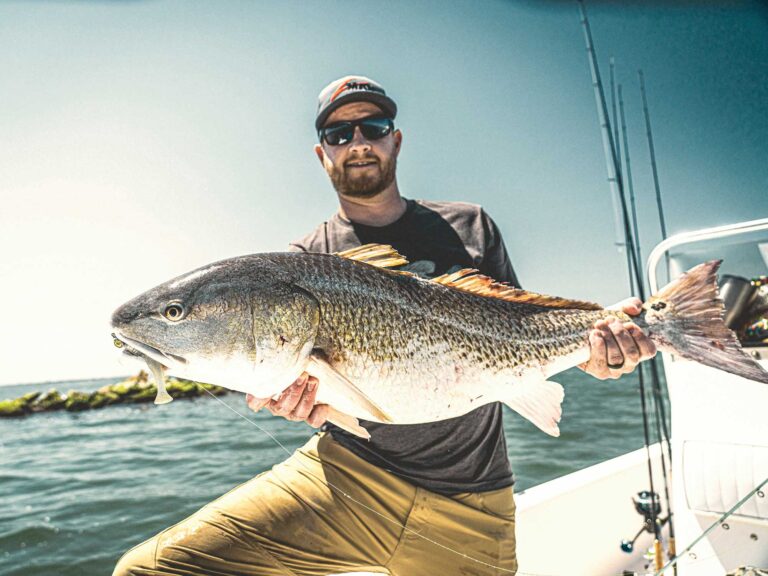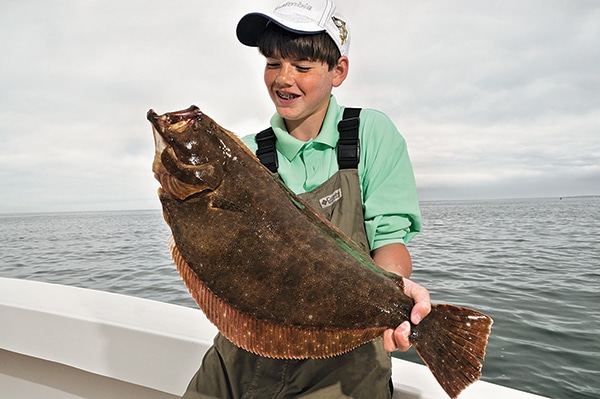
mpfluke
As readers of this column are likely aware, striped bass are the bread-and-butter of just about every light-tackle guide in New England and the mid-Atlantic. While technically not overfished, nor is overfishing currently occurring, that stock is in definitive decline. I promise I’ll write exclusively about striped bass soon (I’m waiting for the results of the 2013 benchmark stock-assessment peer review). For now, let’s take a look at summer flounder (aka fluke) because, as I’ll show, the two species’ different situations are related to the bodies that govern their management.
I’ve been doing quite well with fluke during the last few seasons. Sure, I’ve had some good days of striper fishing, but it’s been anything but consistent. So there are increasingly frequent cases in which, after I’m done banging my head against the wall trying to put clients on often-scarce striped bass, I’ll break out the 6- and 7-weights and we’ll target fluke. Up until the last few years, I never even bothered with them, because the inshore fishery was composed almost exclusively of small, young fish. The large ones were few and far between, and you generally had to go out to 60 or even 90 feet of water and fish with 10 or 12 ounces of lead if you wanted to catch them. A far cry from fly-fishing. Today, summer flounder are beginning to make up a substantial portion of my business, since 20-plus-inch fish are relatively abundant and can be caught in shallow water close to home. And it seems to be consistently good from May to September, providing something to target in the traditional “dog days” of summer.
This is what a federally managed fishery, rebuilt under the current Magnuson-Stevens Act, looks like, and it exists because of the 1996 Sustainable Fisheries Act requirement to rebuild in 10 years or less the 2006 Magnuson-Stevens Reauthorization Act, which put some teeth into it, and, of course, because the Mid-Atlantic Fishery Management Council made the tough decisions and adopted the hard caps on harvest that were essential to successfully rebuilding the stock.
Those decisions were not popular at the time that they were made. It was inevitable that there would be some economic pain associated with the summer flounder’s recovery — pain suffered not only by the commercial fishing industry but also by the recreational fishing industry, which saw its seasons and bag limits shrink while the stocks recovered from decades of overfishing. However, such pain has been well rewarded. According to the National Marine Fisheries Service (NMFS), recreational fishermen caught some 2.7 million summer flounder in 1989. In 2011, after rebuilding, that number was 21 million fish. That’s a 700 percent increase! The National Oceanic and Atmospheric Administration Fisheries Service’s numbers show angler trips over the last decade along the Atlantic Coast up 41 percent from the 1980s. In the mid-Atlantic alone, according to the Fisheries Service, that has brought in an additional $1.4 billion in economic activity and supported 18,660 jobs. On the commercial side, the success story is similar. Gross commercial revenues for summer flounder are up more than 60 percent since 2000, when the rebuilding plan was put in place. In total, all of the rebuilt fish stocks brought in, on average, $585 million in gross commercial revenues every year from 2008 to 2010.
While problems do still exist in the summer flounder fishery, it’s a huge success story. And it’s similar for other recreationally important fish that the Mid-Atlantic Fishery Management Council manages, such as black sea bass and scup. Fluke provide a darn good example of how the mid-Atlantic council took the right approach to management, despite the political pressure brought by some narrow economic interests. They stand in stark contrast to the still-depleted fisheries managed by, for example, the Atlantic States Marine Fisheries Commission (ASMFC — the interstate body that oversees state–managed fisheries such as weakfish, striped bass and winter flounder).
Some fisheries under ASMFC’s purview haven’t fared well precisely because that management body doesn’t have to comply with federal Magnuson-Stevens Act standards, may ignore overfishing and is not required to rebuild overfished stocks. Weakfish, which used to be a substantial portion of my spring business, provide a good example. Today they are virtually gone; the last stock assessment indicates that just 3 percent of the spawning stock remains, yet ASMFC refused to follow the advice of its scientists, who said that closing the fishery was the only way that the stock might begin to recover by the year 2020. They completely failed winter flounder also. When NMFS finally realized the depth of the flounder’s distress in 2009 and closed the fishery in federal waters, ASMFC left state seasons open, likely worsening the situation.
Full circle to stripers. Striped bass remain ASMFC’s only notable “success,” but the real success took place 18 years ago after things got so bad that many states imposed a moratorium on the fishery, and it finally recovered under a management plan that protected 95 percent of the spawning stock. Yet now, while it still hasn’t reached the spawning stock biomass or fishing mortality thresholds, it is declining rapidly. ASMFC’s 2011 Stock Assessment Update states that the striped bass spawning stock biomass will fall below its threshold in 2017, which means that the stock will be overfished in four years. Despite that fact, proposals to reduce harvest have been deferred or rejected by ASMFC’s striped bass management board, even considering that 99 percent of the public clearly wants to see some precautionary action.
The point is this: ASMFC rarely, if ever, takes action to avert a crisis. Unconstrained by the federal law so instrumental in recovering stocks like summer flounder, it generally waits until its managed stocks are on or beyond the threshold of disaster before it does anything. I’m pretty sure that’s where we’re going to end up with striped bass. This is not the way to manage fisheries that are so important to the public and the businesses like mine that depend on them, but that’s what you get when you don’t have the firm rebuilding goals, deadlines and accountability measures the Magnuson-Stevens Act requires.
Abandoning the conservation and management provisions of the Sustainable Fisheries Act in favor of an ASMFC-like model, as some in the recreational fishing community are now suggesting, is a step back in time that will ultimately hurt both fish and fishermen. The successful case of summer flounder and the unsuccessful cases of weakfish, winter flounder and soon striped bass (again) prove that.

